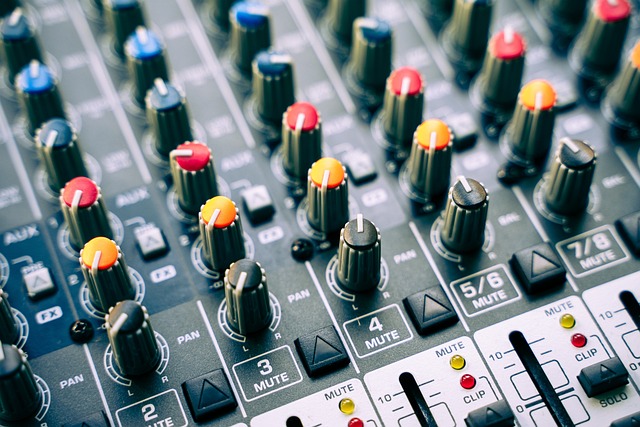Optimal Home Music Systems: Space, Sound, and Budget Guide
Embark on a sonic journey with our comprehensive guide to selecting the perfect home music system. W…….

Embark on a sonic journey with our comprehensive guide to selecting the perfect home music system. Whether you’re an audiophile or a casual listener, this article will navigate you through the essential aspects of creating an audio oasis in your abode. From assessing space and acoustic considerations to understanding components like speakers, amplifiers, and sources, we’ll ensure you make an informed decision that aligns with your audio preferences and budgetary constraints. Dive into the world of immersive sound and elevate your listening experience to new heights.
- Assessing Space and Acoustic Considerations for Home Music Systems
- Understanding Components: Speakers, Amplifiers, and Sources
- Budgeting and Selecting the Right System for Your Audio Needs
Assessing Space and Acoustic Considerations for Home Music Systems

When selecting a home music system, assessing the available space and acoustic considerations is paramount to optimize audio performance and user experience. The physical dimensions of your listening environment will dictate the size and layout of the sound system required. For instance, a smaller room may benefit from a compact setup with bookshelf speakers, while larger spaces might necessitate floor-standing models or a surround sound configuration to fill the area evenly without distortion. Additionally, materials and furnishings within your space influence sound reverberation; soft furnishings like carpets and curtains can absorb sound, whereas hard surfaces like concrete walls and glass can reflect it. To achieve the best acoustic balance, consider the room’s characteristics and how they interact with sound waves. Strategic placement of speakers, along with the inclusion of acoustic treatment elements such as diffusers, bass traps, and acoustic panels, can mitigate issues like echo and standing waves, ensuring a clear and enjoyable audio experience regardless of your room’s inherent acoustic properties. Understanding these factors will guide you in making an informed decision that aligns with both the technical specifications of the system and the unique characteristics of your living space.
Understanding Components: Speakers, Amplifiers, and Sources

When constructing a home music system, it’s crucial to have a foundational understanding of its core components: speakers, amplifiers, and sources. Speakers are the conduits through which you experience your favorite tracks; they convert electrical signals into sound waves. The choice between floor-standing speakers for a full-bodied audio presence or bookshelf speakers for a more compact setup depends on the space available and personal listening preferences. In any case, the quality of the drivers—tweeters for high frequencies, mid-range drivers for vocals and instruments, and woofers for low-frequency effects—plays a significant role in delivering a balanced and immersive soundstage.
Amplifiers act as the powerhouse, amplifying the signal from your source to drive the speakers efficiently. They come in various forms, including integrated amplifiers that combine an amp and a preamplifier, stereo amplifiers for multi-channel audio systems, and even more specialized designs like headphone amplifiers for personal listening experiences. The power output, input/output connectivity, and build quality are key factors to consider when selecting an amplifier that matches both your speakers’ needs and the intended volume levels of your listening environment. Additionally, sources encompass everything from vinyl turntables, CD players, and digital streaming devices like Sonos or Apple TV to smartphones and computers. The quality of the source will directly impact the sound you hear; hence, it’s important to choose a reliable and high-resolution source component to ensure the best possible signal is fed into your amplifier and ultimately reaches your speakers. Each component in this audio chain has a ripple effect on the overall sound quality, making the selection of each part a carefully considered process for audiophiles and casual listeners alike.
Budgeting and Selecting the Right System for Your Audio Needs

When budgeting for a home music system, it’s crucial to assess your audio needs and financial constraints concurrently. Begin by determining how much you’re willing to invest; this will narrow down your options significantly. Keep in mind that a higher budget can unlock more advanced features, better sound quality, and a wider range of compatible devices. However, even with a limited budget, there are systems available that offer excellent performance. Consider the types of audio sources you’ll be using—streaming services, vinyl records, CDs, or digital files—as this will influence the components necessary for your setup. For instance, if you’re a vinyl enthusiast, prioritize a system with a high-quality phono preamp. If streaming is your preference, look for systems with robust Wi-Fi capabilities and support for high-resolution audio formats. Additionally, think about the size of your living space and how you intend to use the system; a multi-room setup might be desirable if you wish to play music throughout your home. The number of rooms and the desired consistency in sound across those rooms will further dictate the complexity and cost of the system. With your budget and needs outlined, you can then select a system that balances both without compromising on quality. Remember to account for future upgrades as well; choose a system with scalability in mind so that you can enhance it over time without needing a complete replacement. This approach ensures that you invest wisely and create a home music system that’s tailored to your current and anticipated audio requirements.
When constructing a home music system, the key lies in balancing your auditory aspirations with practical space and budgetary constraints. By carefully considering acoustics, understanding the roles of speakers, amplifiers, and sources, and selecting components that align with both your audio preferences and financial considerations, you can create a listening environment that provides an immersive experience tailored to your needs. Whether you’re a casual listener or an audiophile, the right system awaits to elevate your musical enjoyment within the confines of your personal space. Remember to focus on the integration of quality components and the room’s acoustic properties to ensure the best possible sound in your home.